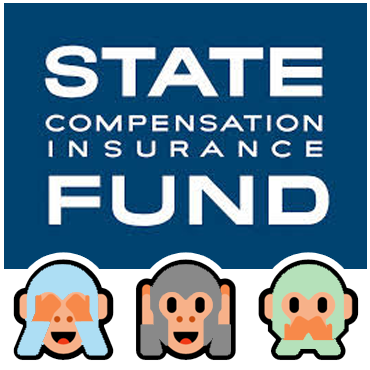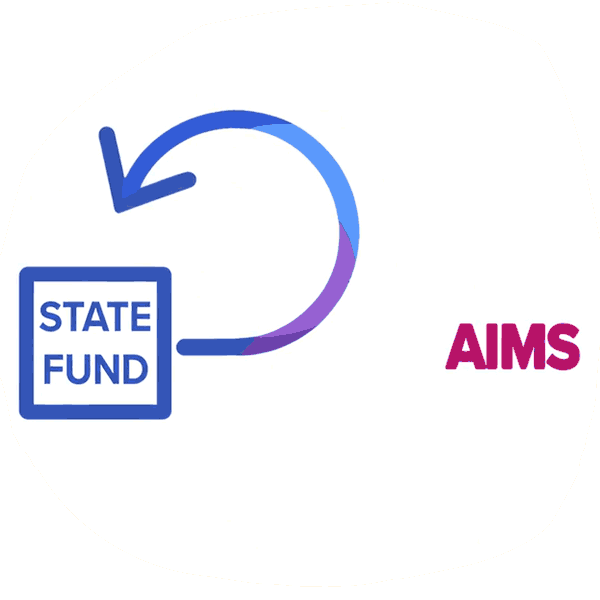SCIF (CA) Incorrectly Paying 2018 Fee Schedule for 2019 DOS

It’s SCIF’s turn. The California State Compensation Insurance Fund (SCIF) is also incorrectly reimbursing providers using the 2018 Physician Fee Schedule instead of the correct 2019 version.
We’re now in the fourth installment of our continuing series on the seemingly systematic underpayment of bills by some of the largest payers in California’s workers’ compensation system.
Each of the four payers exposed in this series -- Sedgwick, York, Liberty Mutual, and now SCIF -- used the 2018 fee schedule to underpay what may be untold tens of thousands of bills for 2019 dates of service (DOS).
Some payers may attempt to dismiss their widespread 2019 underpayment by citing a “glitch” or other vague excuse. However, in the case of SCIF, there is clear evidence that demonstrates SCIF is aware of and has the ability to apply the correct fee schedule reimbursement to 2019 bills. The example below is a single explanation of review (EOR) with multiple payments which SCIF issued on 1/30/19. Inexplicably, this EOR contains SEVEN INCORRECT 2018 reimbursements and ONE CORRECT 2019 reimbursement, the latter of which reveals that SCIF knows the correct 2019 OMFS reimbursement.
The provider appealed all seven incorrect reimbursements and SCIF denied all seven Second Review appeals, forcing the provider to appeal for correct 2019 payment by 1) requesting seven Independent Bill Reviews (IBRs) and 2) paying seven IBR filing fees.
To collect the $88.98 that SCIF failed to pay the provider, California requires the provider to:
- Pay $1,365 in IBR fees,
- Submit 263 pages of documentation, and
- Wait months for a Maximus decision (as explained below, these IBRs cannot be consolidated).
Something is drastically wrong here, but something is also CRYSTAL clear: payers’ systematic denial of providers’ Second Review appeals means that payers benefit from the deterrence effect felt by providers contemplating the next step in the appeals process; an effect produced by the extremely labor-intensive and expensive process of submitting IBRs and, subsequently, the difficulties of collecting the money due from IBR decisions.
Every California workers’ comp stakeholder should be outraged by the bill mishandling inflicted upon this provider by SCIF. In the example below, for each treatment, the provider complied with ALL of the extensive state-mandated authorization and billing requirements. The provider:
- Obtained authorization,
- Submitted a timely and complete bill along with the state-required reports, and
- Submitted a timely and compliant Second Review appeal requesting correct payment.
Sedgwick, York, Liberty Mutual, and SCIF are some of the largest workers’ comp payers in the state of California, with huge resources, battalions of adjusters, and, presumably, access to intelligent teams to alert these payers to the DWC fee schedule updates. Mind you, the whole industry knows these updates occur annually at the beginning of the year, and the whole industry knows to adjust for these reimbursement changes.
We can only wonder at a seemingly widespread and systematic pattern of payers NOT adjusting to these expected reimbursement changes. Especially when not adjusting to the changes means that these payers reap increased profits. Meanwhile, providers are repeatedly underpaid for treating injured workers.
California workers’ comp is failing providers, and therefore, failing injured workers.
Today’s example of unfair treatment traces the pain of just one provider seeking reimbursement for just seven bills submitted to SCIF. It is mind-boggling to extrapolate the following payment ordeal to all California providers that treat injured workers.
- In this Explanation of Review (EOR), the provider submits charges at the anticipated 2019 Fee Schedule reimbursement rate. This is a breeze because DaisyBill’s powerful software calculates expected payment using the new Geographic Practice Cost Indices (GPCIs) introduced with the 2019 Physician Fee Schedule changes.
- The charges for codes 90834, 90875 and WC002 are unceremoniously cut to the 2018 fee schedule rates. Note that SCIF issued the EOR on 1/30/2019, thirty days after the reimbursement changes.
- For DOS 1/9/2019, SCIF reimburses the provider the CORRECT 2019 OMFS rate. Yes, you’re reading this correctly -- in the midst of all the other incorrect reimbursements on the SAME EOR, SCIF actually reimbursed this DOS pursuant to the 2019 rates.
Further, these CPT codes are the new 2019 psychological testing codes which replaced CPT 96101 and CPT 96102. So SCIF is aware of these new CPT codes, SCIF reimburses these codes correctly, but SCIF does NOT reimburse the PR-2 (WC002) and other CPT codes correctly.
- Despite the provider’s accurate initial billing, SCIF underpays for the services by $88.98, or about 6% of the correct amount due. Though this particular underpayment seems trivial, imagine multitudes of these underpayments on an industry-wide scale.
- The provider submits SEVEN Second Review appeals, a process simplified to three clicks with DaisyBill’s powerful and intuitive platform. For providers not using DaisyBill, submitting seven Second Reviews would be a time-prohibitive undertaking to collect $88.98.
- SCIF denies all seven Second Review appeals -- neither unprecedented nor unexpected, but patently unfair to a provider rendering authorized treatment to an injured worker.
- In another blow to logic and reason, Maximus, the entity contracted to decide on IBRs, refuses to consolidate IBR requests for the SAME payment dispute when the dispute involves different claim numbers, different codes or different dates of service.
- When payers refuse to use the correct fee schedule, another forest of trees is destroyed, $1,365 in IBR fees go into the void, and Maximus’ backlog piles up. All for seven DOS on an EOR with an eighth service correctly paid.
SCIF presents yet another horrifying example of a payer that benefits from the fundamental unfairness of a state-mandated administrative “appeal” system where providers must carry the burden of rectifying payer (and sometimes, Maximus) mistakes.
These payers reap profits from a pattern of underpayment by relying on this unbalanced state-mandated “appeal” system. Broken down to its essentials:
- PAYER incorrectly underpays for 2019 DOS.
- To appeal incorrect underpayment, the PROVIDER must submit a timely and compliant Second Review
- Payer denies the Second Review appeal.
- Provider must file an expensive and time-consuming Independent Bill Review (or write off the amount due).
- Each time a provider gives up on the appeal process, payers profit.
What’s more, there are ZERO consequences for these payers. No deterrents, and therefore, no incentive to process bills correctly.
Tired of underpayments? Challenging payers is a snap with DaisyBill’s powerful software. Create bills with the most current and accurate reimbursement rates and rebut inappropriate denials in three clicks with compliant Second Review appeals. Take advantage of a free demo today and see what DaisyBill does with ease.
SIGN UP FOR A DEMO
DaisyBill provides content as an insightful service to its readers and clients. It does not offer legal advice and cannot guarantee the accuracy or suitability of its content for a particular purpose.




